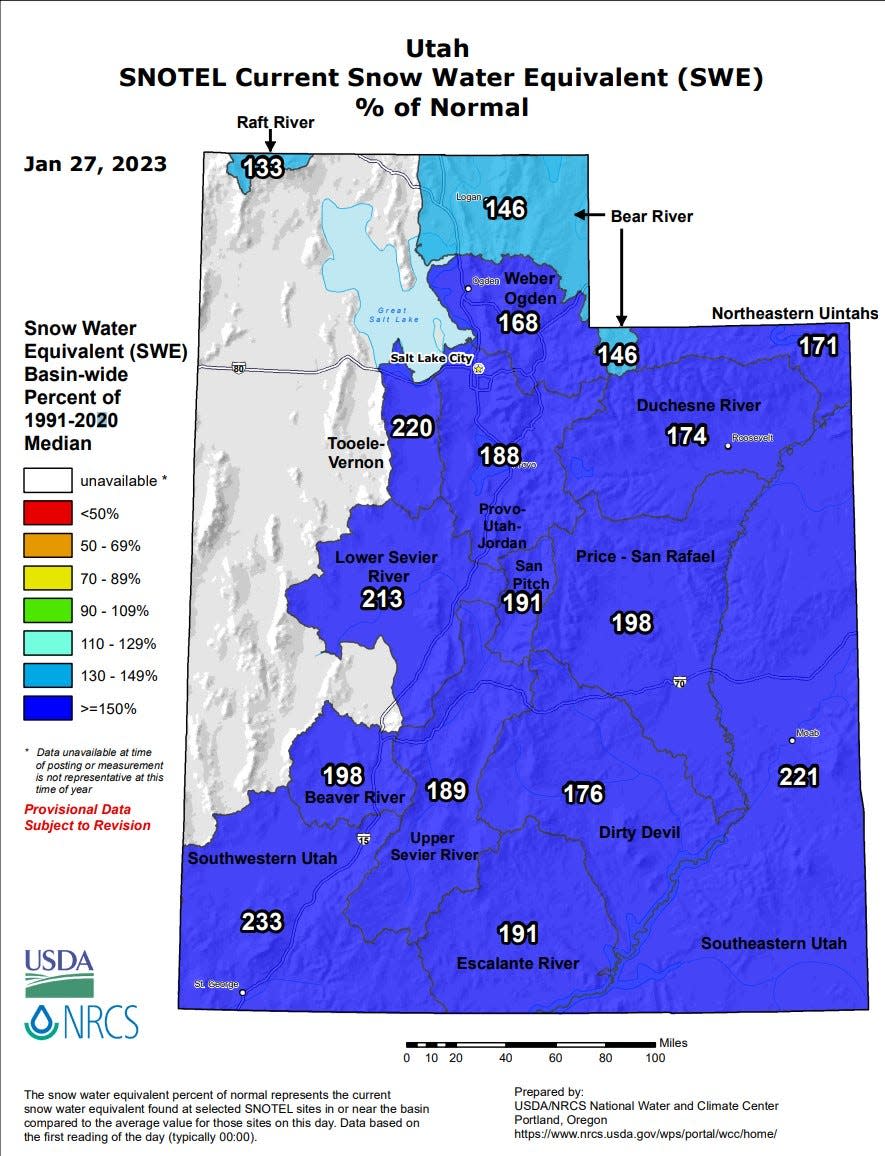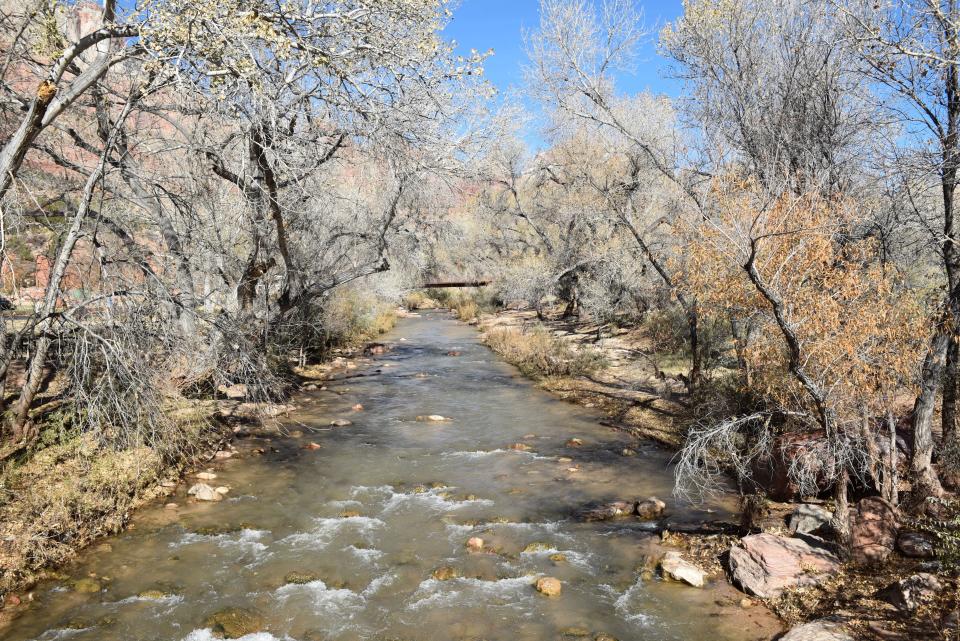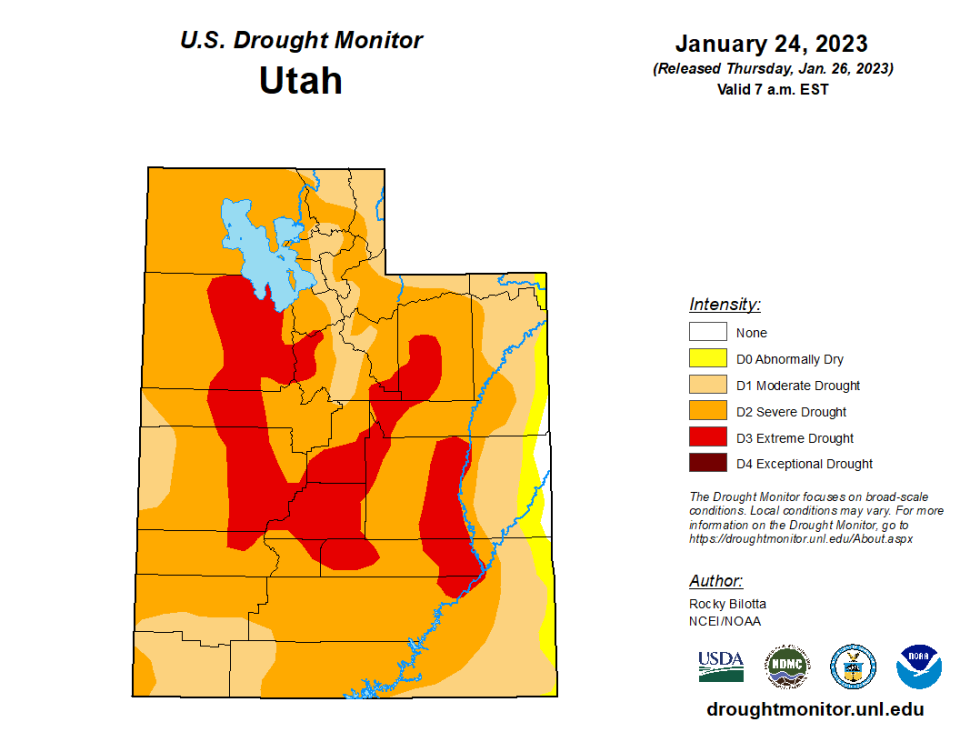Stormy winter has helped, but Utah's drought remains

A series of winter storms dumped about twice as much snow as usual on Utah over the past two months, helping to cover the state's mountains and potentially help alleviate some of the drought conditions that have plagued the state for years.
But despite the heavy snowfall, the water year is still far from over and state officials are warning that most of the state could still face drought conditions, depending on what happens before spring.
The statewide snowpack was at 183% of normal as of Wednesday, marking the best winter in nearly 20 years for snow-water equivalent, a measure of how much water is stored in mountain snow. With about two months left in the "water year," which leads to the all-important spring runoff when mountain snow melts and feeds into state reservoirs, state water managers were hopeful.
If the figure holds up, it would be the best water winter for Utah in nearly 20 years and one of the best on record. Since monitoring sites were installed in the 1960s and 70s, the only years that have measured better than 183% were 1984, 1997 and 2005.
"These snow totals are a welcome sight and have given a much-needed boost to our snowpack," Candice Hasenyager, director of the Division of Water Resources, said. "Every basin in Utah is reporting over 150% of normal snowpack. This is great news, especially for basins such as the Upper and Lower Sevier, which have seen dwindling water supplies in the last few years."

The numbers looked even better in southwestern Utah, where the snow-water equivalent measures were at 233% of average.
The Great Salt Lake has risen more than a foot since hitting a historic low in early November. It took the entire water season to raise the lake a foot last year.
Still, the state has a long way to go to overcome years of drought. Despite the snowpack, nearly all of the state was still technically under some form of drought, according to measures kept by the U.S. Drought Monitor.
Authors of the report had downgraded the level of "exceptional" drought, the worst category, to 0%, but most of the state was still in the second and third-worst categories, severe and extreme, as of Wednesday.

Thirty of the state's 47 reservoirs were still below 55% full, and 18 of 71 measured streams were flowing at below-normal levels.
It would likely take multiple years of above-average snowpack to refill the state's reservoirs, Hasenyager said.
“This is good news, but we have a long road ahead to recover from this prolonged drought,” Hasenyager said. “We must continue to use our water wisely to see the full benefits of the new snow added to our snowpack.”
This article originally appeared on St. George Spectrum & Daily News: Utah snowpack is nearly 200% of normal but drought worries remain

